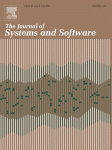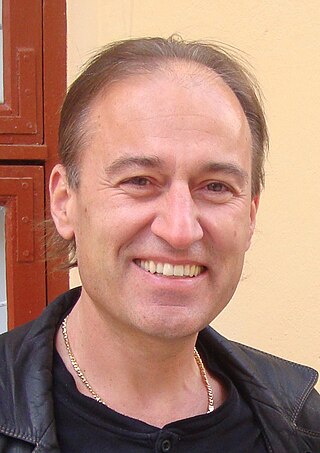The Association for Computing Machinery (ACM) is a US-based international learned society for computing. It was founded in 1947 and is the world's largest scientific and educational computing society. The ACM is a non-profit professional membership group, reporting nearly 110,000 student and professional members as of 2022. Its headquarters are in New York City.

SIGGRAPH is an annual conference centered around computer graphics organized by ACM, starting in 1974 in Boulder, CO. The main conference is usually held in North America though is not limited in location possibilities; SIGGRAPH Asia, a second conference held annually, has been held since 2008 in countries throughout Asia.
ACM SIGGRAPH is the international Association for Computing Machinery's Special Interest Group on Computer Graphics and Interactive Techniques based in New York. It was founded in 1969 by Andy van Dam.
In academia and librarianship, conference proceedings are a collection of academic papers published in the context of an academic conference or workshop. Conference proceedings typically contain the contributions made by researchers at the conference. They are the written record of the work that is presented to fellow researchers. In many fields, they are published as supplements to academic journals; in some, they are considered the main dissemination route; in others they may be considered grey literature. They are usually distributed in printed or electronic volumes, either before the conference opens or after it has closed.
Thomas Albert "Tom" DeFanti is an American computer graphics researcher and pioneer. His work has ranged from early computer animation, to scientific visualization, virtual reality, and grid computing. He is a distinguished professor of Computer Science at the University of Illinois at Chicago, and a research scientist at the California Institute for Telecommunications and Information Technology (Calit2).

Patrick M. Hanrahan is an American computer graphics researcher, the Canon USA Professor of Computer Science and Electrical Engineering in the Computer Graphics Laboratory at Stanford University. His research focuses on rendering algorithms, graphics processing units, as well as scientific illustration and visualization. He has received numerous awards, including the 2019 Turing Award.
James David Foley is an American computer scientist and computer graphics researcher. He is a Professor Emeritus and held the Stephen Fleming Chair in Telecommunications in the School of Interactive Computing at Georgia Institute of Technology. He was Interim Dean of Georgia Tech's College of Computing from 2008–2010. He is perhaps best known as the co-author of several widely used textbooks in the field of computer graphics, of which over 400,000 copies are in print and translated in ten languages. Foley most recently conducted research in instructional technologies and distance education.

The Journal of Systems and Software is a computer science journal in the area of software systems, established in 1979 and published by Elsevier.
Jock D. Mackinlay is an American information visualization expert and Vice President of Research and Design at Tableau Software. With Stuart Card, George G. Robertson and others he invented a number of information visualization techniques.

Andrew Paul Witkin was an American computer scientist who made major contributions in computer vision and computer graphics.

Markus Gross is a Professor of Computer science at the Swiss Federal Institute of Technology Zürich (ETH), head of its Computer Graphics Laboratory, and the director of Disney Research, Zurich. His research interests include physically based modeling, computer animation, immersive displays, and video technology. He has published more than 430 scientific papers on algorithms and methods in the field of computer graphics and computer vision, and holds more than 30 patents. He has graduated more than 60 Ph.D. students.
Holly Rushmeier is an American computer scientist and is the John C. Malone Professor of Computer Science at Yale University. She is known for her contributions to the field of computer graphics.

Bedrich Benes is a computer scientist and a researcher in computer graphics.
IEEE Transactions on Visualization and Computer Graphics is a peer-reviewed scientific journal published by the IEEE Computer Society. It covers subjects related to computer graphics and visualization techniques, systems, software, hardware, and user interface issues. TVCG has been considered the top journal in the field of visualization.

Hanspeter Pfister is a Swiss computer scientist. He is the An Wang Professor of Computer Science at the Harvard John A. Paulson School of Engineering and Applied Sciences and an affiliate faculty member of the Center for Brain Science at Harvard University. His research in visual computing lies at the intersection of scientific visualization, information visualization, computer graphics, and computer vision and spans a wide range of topics, including biomedical image analysis and visualization, image and video analysis, and visual analytics in data science.

Michael Kass is an American computer scientist best known for his work in computer graphics and computer vision. He has won an Academy Award and the SIGGRAPH Computer Graphics Achievement Award and is an ACM Fellow.
Xu Li is a Chinese computer scientist and co-founder and current CEO of SenseTime, an artificial intelligence (AI) company. Xu has led SenseTime since the company's incorporation and helped it independently develop its proprietary deep learning platform.

Computers & Graphics is a peer-reviewed scientific journal that covers computer graphics and related subjects such as data visualization, human-computer interaction, virtual reality, and augmented reality. It was established in 1975 and originally published by Pergamon Press. It is now published by Elsevier, which acquired Pergamon Press in 1991. From 2018 to 2022 Graphics and Visual Computing was an open access sister journal sharing the same editorial team and double-blind peer-review policies. It has since merged into GMOD, the International Journal of Graphical Models.
Jiaya Jia is a Chair Professor of the Department of Computer Science and Engineering at The Hong Kong University of Science and Technology (HKUST). He is an IEEE Fellow, the associate editor-in-chief of one of IEEE’s flagship and premier journals- Transactions on Pattern Analysis and Machine Intelligence (TPAMI), as well as on the editorial board of International Journal of Computer Vision (IJCV).
Wolfgang Heidrich is a German-Canadian computer scientist and Professor at the King Abdullah University of Science and Technology (KAUST), for which he served as the director of Visual Computing Center from 2014 to 2021. He was previously a professor at the University of British Columbia (UBC), where he was a Dolby Research Chair (2008-2013). His research has combined methods from computer graphics, optics, machine vision, imaging, inverse methods, and perception to develop new Computational Imaging and Display technologies. His more recent interest focuses on hardware-software co-design of the next generation of imaging systems, with applications such as high dynamic range (HDR) imaging, compact computational cameras, hyper-spectral cameras, wavefront sensors, to name just a few.








